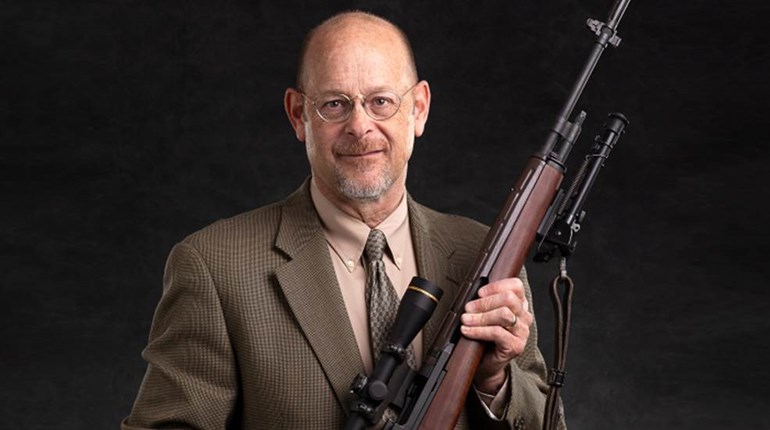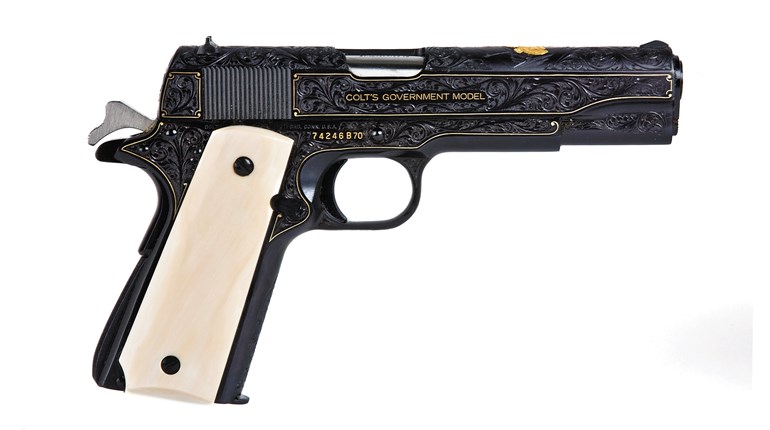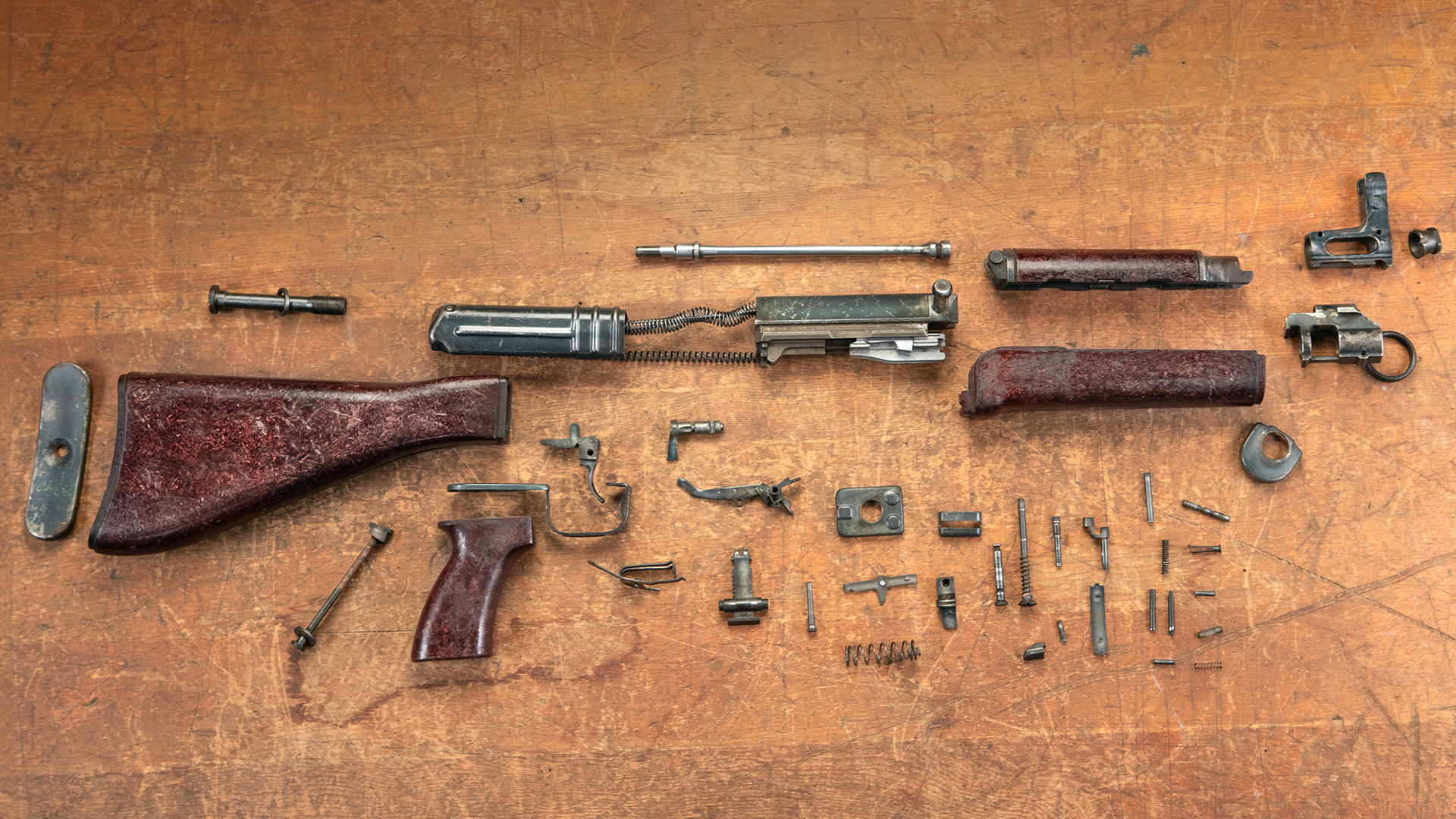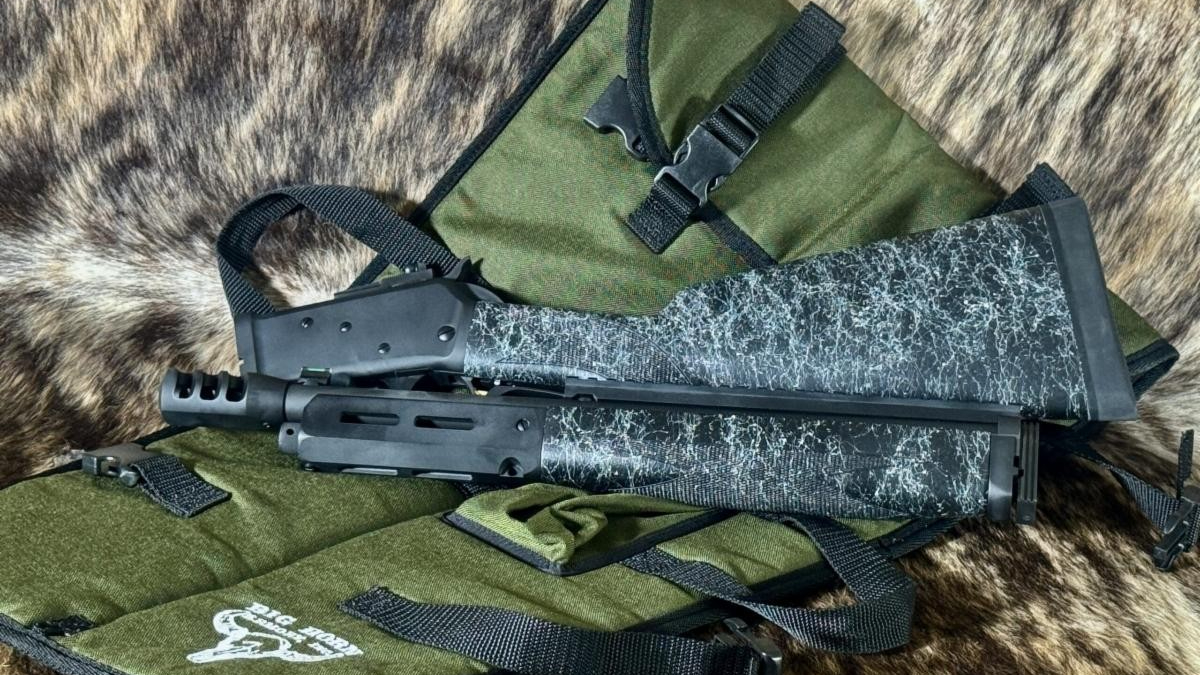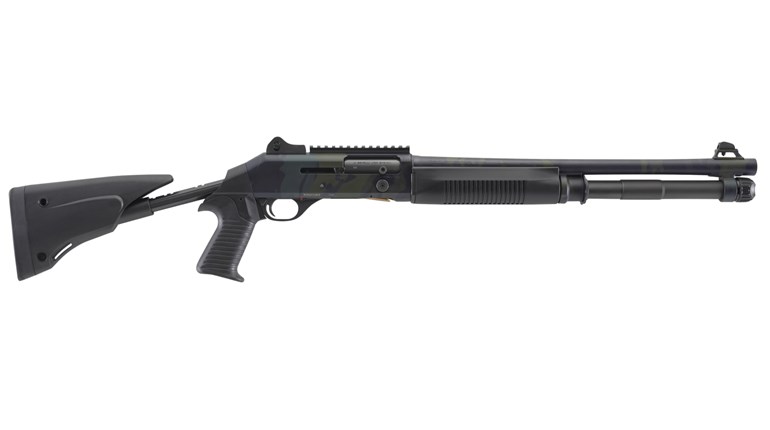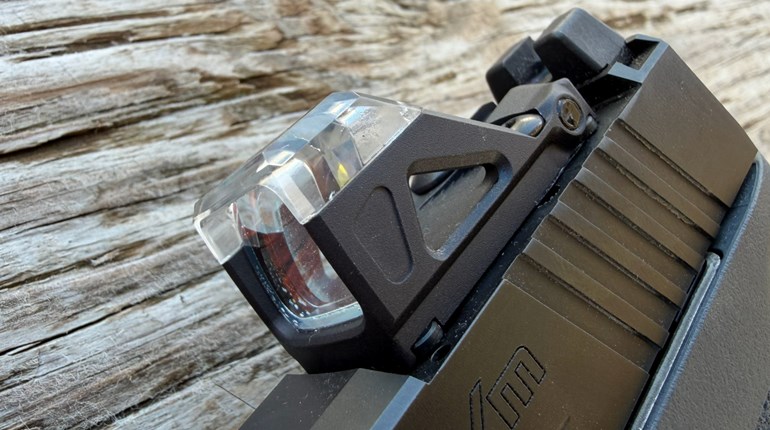
Key differences in the operation of the AK-47-pattern rifle from the U.S. Army’s M16 gave pause, as shown by this Vietnam-era MP’s apparent difficulty seating the magazine.
My unit was the new guys in Vietnam, with only a few months in country. But, on that humid fall afternoon, the typical drudgery of most days was broken by an event of some importance. A patrol from one of my battalion’s rifle companies surprised several Viet Cong and a sharp little fight happened. When the last round of brass bounced off the red clay of that war-weary land, two VC dead were left behind —along with their weapons. I was the S2, or intelligence officer, and the enemy equipment was delivered to me for evaluation. There were several documents, a small notebook (with which I could do nothing) and their two firearms. The lifelong gun nut in me was suddenly having a field day. Both weapons were easily identified.
The first had been associated with war in Vietnam for decades. In the post-World War II era, France had fought unsuccessful colonial wars in Indochina and Algeria. Much of its equipment had found its way into the hands of its adversaries. This French arm was the 9 mm MAT-49 submachine gun, much beloved by the French paratroopers for its portability and effectiveness. The paras slid the wire buttstock in and closed, then folded the magazine up under the barrel. It made a compact package small enough to strap atop their reserve parachute. Large quantities of MAT-49s were left behind in 1954 when the French suffered their ultimate defeat at Dien Bien Phu. There is no way to trace the working life of the one I examined that day, but it was made in France and used halfway around the world.
It was really the second gun that had much greater significance in the military sense. Made in China, the gun was a copy of the AK-47 (Avtomat Kalashnikova 47). In the complete history of small arms, no gun has been made in greater quantity. I have read estimates of production quantities running as high as 500 million (which I doubt). However, what I do not doubt is that AK-47s have been made in more, different factories in more, different countries than any other firearm. Also, the gun has seniority, having been in broad use for 75 years now.
The arm actually grew out of a system with which the Germans experimented during World War II. At that time, the German armed forces issued the ’98 Mauser, a five-shot, bolt-action rifle of generous proportions. Most infantry rifles of that conflict were a similar, manually operated type. The exception was the justly famous U.S. M1 Garand. All of these guns fired full-power rifle cartridges like the 8 mm Mauser and the .30-’06 Sprg. That’s because of the general rule that infantry was supposed to be fighting at approximately 500 yards. This varied widely with the terrain and the situation, but, as time passed, the decisive infantry battles were fought at increasingly shorter distances.
The weight, power and complexity of full-size battle rifles became somewhat questionable, and German designers came up with a new style of gun. They called it the Sturmgewehr for “storm rifle” or “assault rifle.” The gun had a compact receiver, short barrel, 30-round curved magazine and was chambered for an intermediate-length, .30-caliber cartridge. There were several variations, but the Model of 1944 (StG 44) was best known. The German arms industry made them in quantity and some fell into the hands of Soviet ordnance people as the Red Army advanced. The Soviets were learning from their experience fighting a war on a huge scale that the rifles and submachine guns with which they outfitted their troops were becoming obsolete. The selective-fire, assault-rifle concept caught on.
The man who did the most to bring this new gun to reality was a convalescing tank mechanic by the name of Mikhail Kalashnikov. It was not until the late 1940s that this home-grown engineer got the first AK-47s into the hands of his country’s soldiers. The guns were first criticized for their cheap, unfinished look. But, over time, it became obvious that Mr. Kalashnikov had no serious concern over what his rifle looked like. He only cared that it worked. It does.
The rifle’s profile is distinctive. Take the magazine, for example. There is a pronounced curve because the cartridges are wide at the rim and taper to the bullet’s point. This contour contributes to feeding efficiency. The AK-47 is a modern gun, but it has a wooden fore-end, pistol grip and buttstock—the Soviet Union had no shortage of trees, but petroleum-derived products like plastic were in somewhat shorter supply. In similar fashion, there are many other common-sense touches. They work after firing hundreds of rounds and in mud, rain, snow and sleet. Every country in the Communist bloc made the AK-47, with some derivatives exceeding the Soviet-made versions win quality.
My first impression stays with me, particularly that magazine. This was—and still is—real fightin’ iron.












